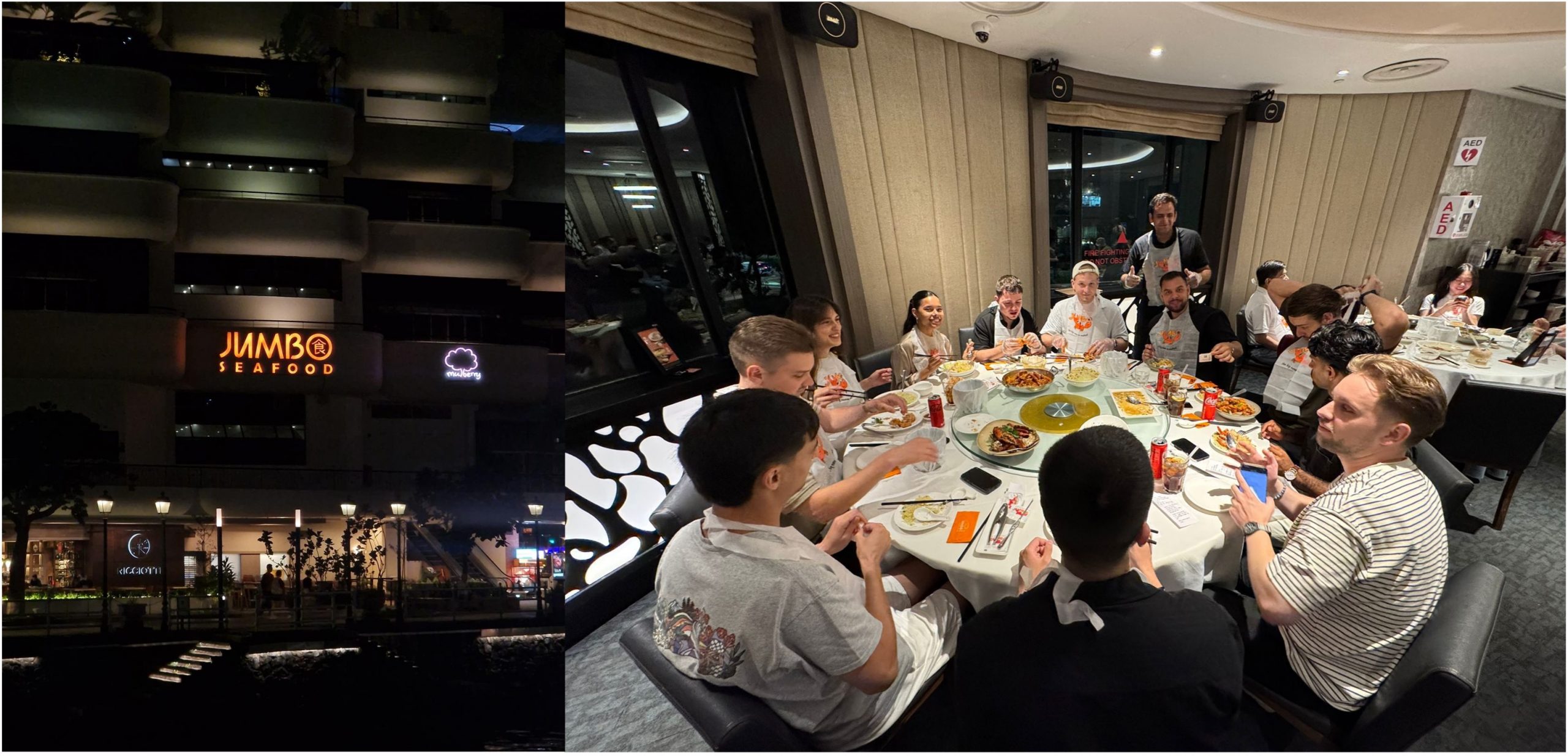Today’s itinerary took us out of the city and into a lesser-known side of Singapore. Our destination was Atlas Aquaculture, a land-based fish farm doing things differently. Unlike traditional sea farms, Atlas raises its fish entirely on land, enabling them to protect the ocean and maintain tighter control over the farming environment. Built on a 2.1-hectare plot that had been unused for years, Atlas has transformed the space into one of Singapore’s most innovative and forward-thinking aquaculture projects.
We were warmly welcomed by Victoria Yoong, who stood out for her honest and passionate way of sharing their story. She didn’t just talk about how the systems works, she also spoke openly about the challenges. During COVID-19, construction came to a halt, workers were hard to find, and at times they had to build parts of the farm themselves.
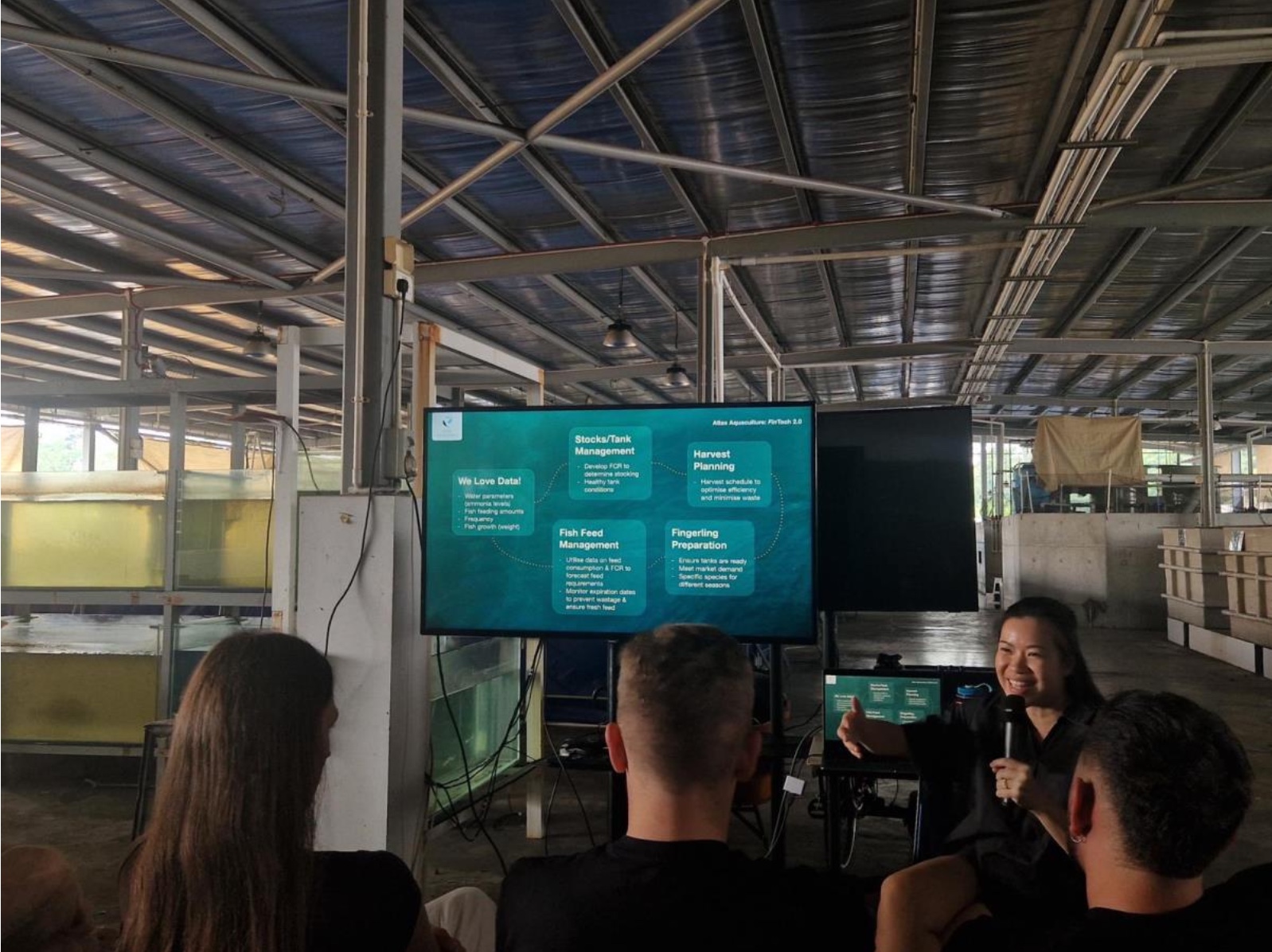
Atlas’ goal is to produce healthy fish without harming the ocean. Their closed-loop water system recycles over 95 percent of water and is carefully adjusted for different species. The water may look murky, but that is intentional. It keeps conditions stable and helps prevent harmful bacteria from developing. Maintaining optimal waterconditions is essential to this closed system. That’s why water quality is constantly monitored to support fish health.
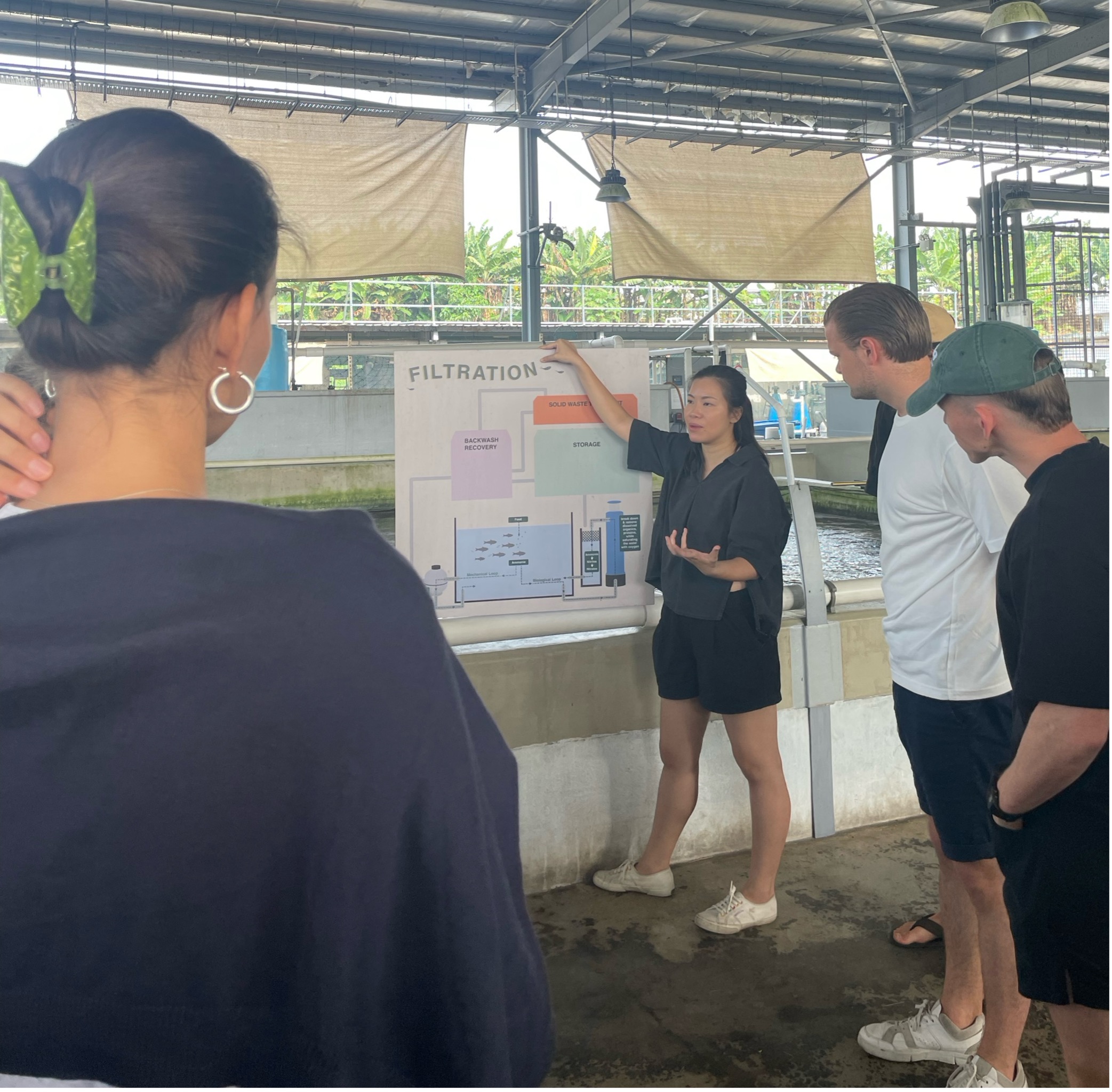
We were surprised to learn that they even adjust the water depending on whether the fish are meant for Chinese or Western cuisine, a mix of science and culinary precision. During the visit, we asked Victoria if Atlas supplied the restaurant where we would have our final dinner and she confirmed that they did.
Walking through the facility, which used to be a quarantine site for the Singapore Aquarium, we noticed how much of their work is based on practical and hands-on solutions. Instead of relying on expensive and complex systems, they build what they need, often in creative and efficient ways.
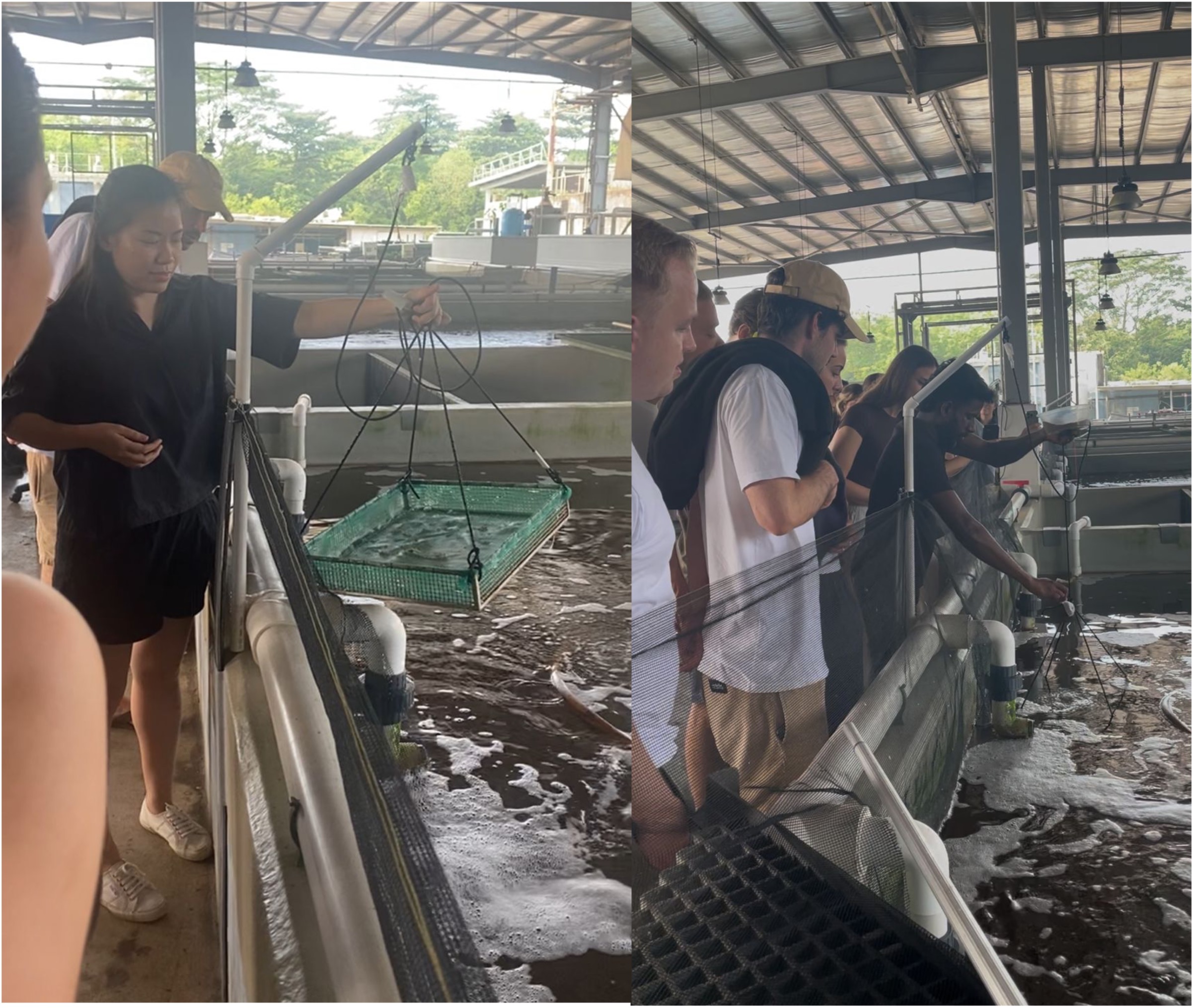
Victoria also shared that they focus solely on tropical fish because even a one-degree difference in temperature can significantly raise energy costs. The fish we saw ranged from tiny fingerlings weighing just a few grams to fully grown fish of over 42 kilograms. All fish waste is treated and turned into fertilizer. Just recently they have added solar panels and built their own breeding place to reduce reliance on external suppliers. A fun moment during our visit was when we got to hold some frogs. One jumped away, and Victoria smiled and said, “Don’t worry, they always come back.”
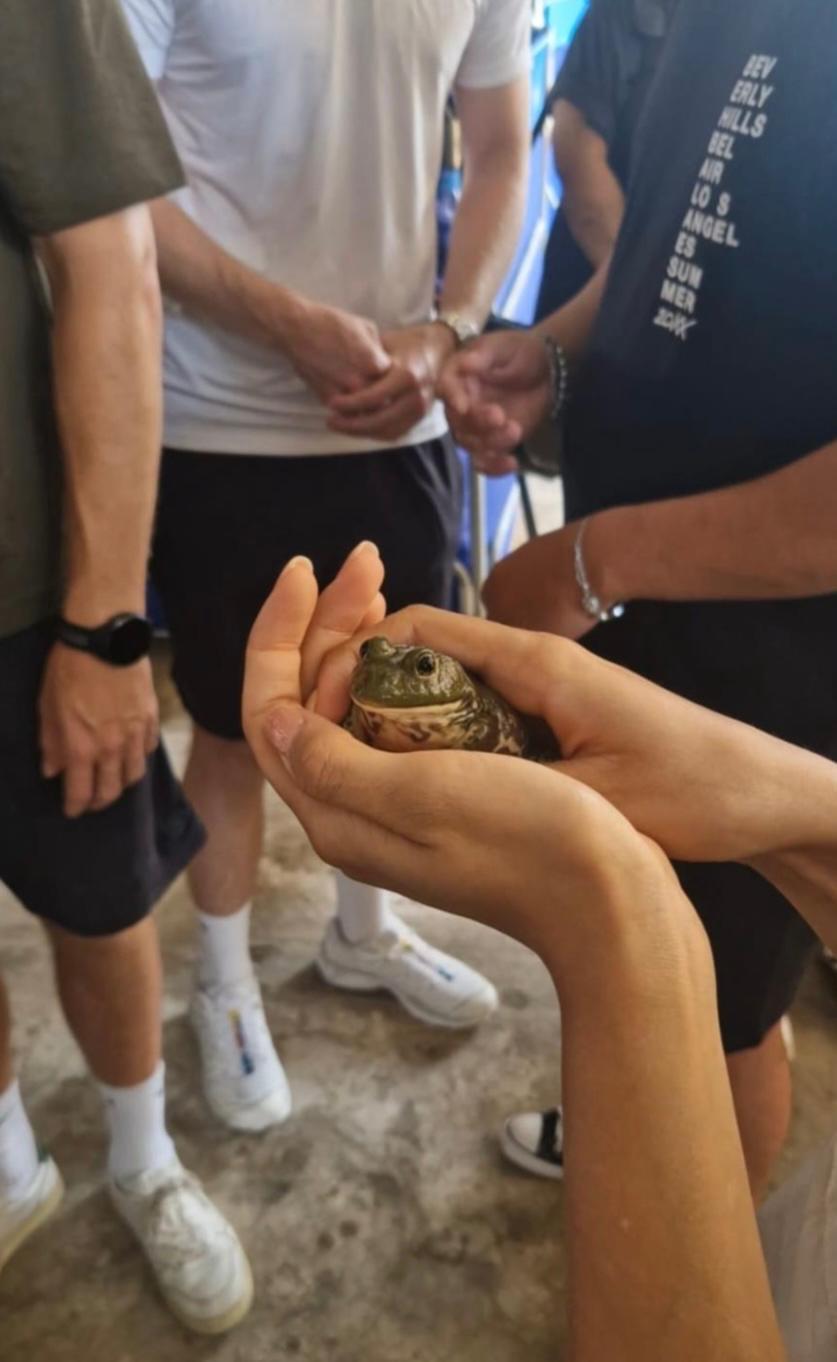
What stood out wasn’t just the technology, it was the mindset. At every stage, Atlas finds ways to work with what they have. Innovation here doesn’t mean complexity. It means creativity, patience and adaptability.
After an individual lunch, we reconvened at Nanyang’s Clinical Sciences Building, where we met Charles Stacey, CEO of Cerecin Neurosciences. During an hour-long talk, Charles walked us through his journey from practicing medicine to leading a neuroscience startup. With two decades of experience in healthcare, his shift to the business side was driven by a desire to create broader impact.
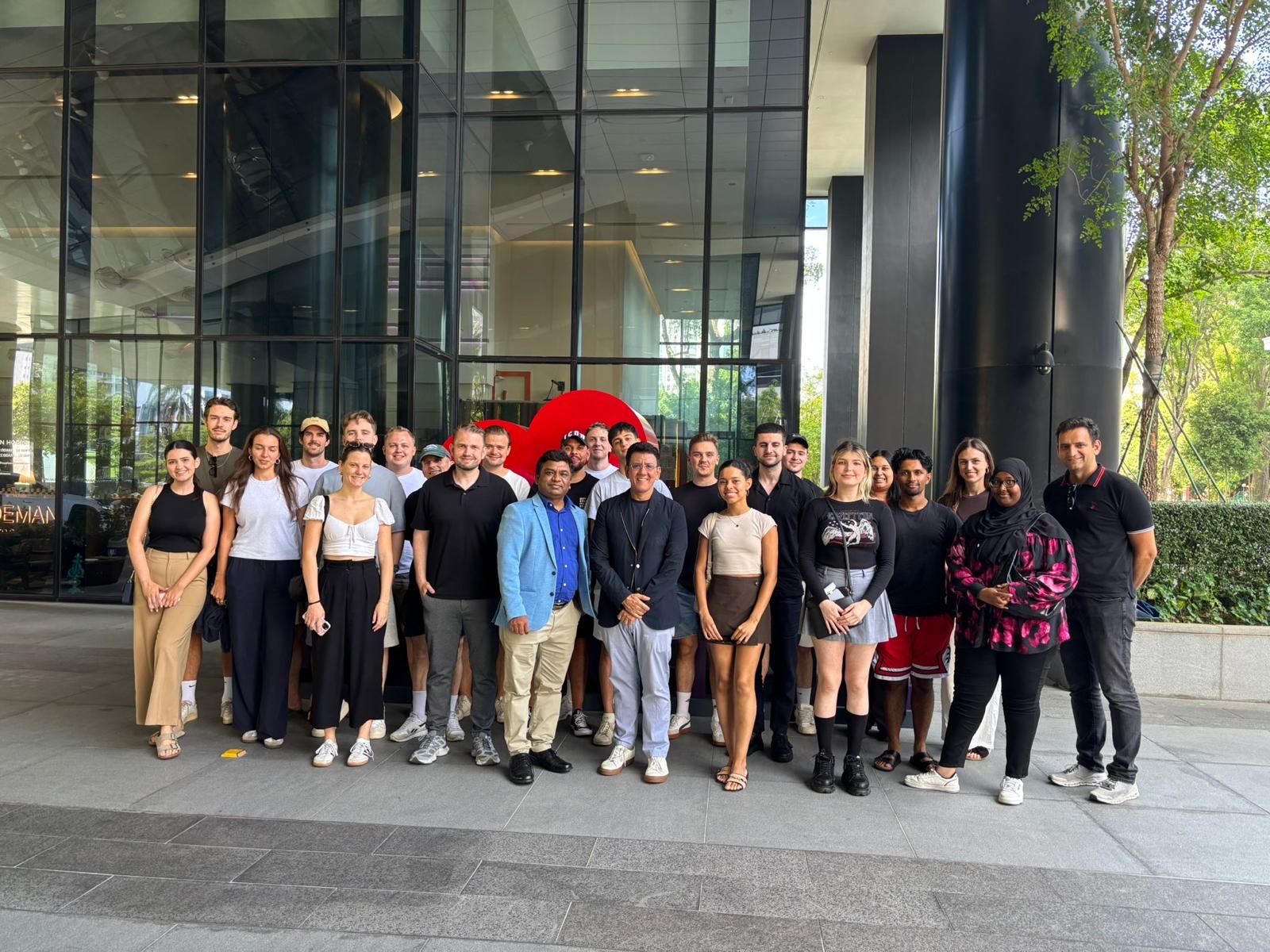
Rather than focusing on specific drug mechanisms, Charles spoke about the potential of ketogenic approaches to influence metabolism, particularly in the context of neurodegenerative diseases like Alzheimer’s. He emphasized how metabolic interventions could reshape the way we think about treating these conditions.
One moment that stood out was a slide he shared, comparing different types of impact: a surgeon might directly affect approximately 14,000 lives over a career, his first startup ResQSplint could reach an estimated 1.5 million lives, and Cerecin’s lead drug candidate has the potential to benefit up to 50 million individuals. It was a striking way to illustrate how the scale of impact can grow when healthcare is combined with innovation and entrepreneurship.
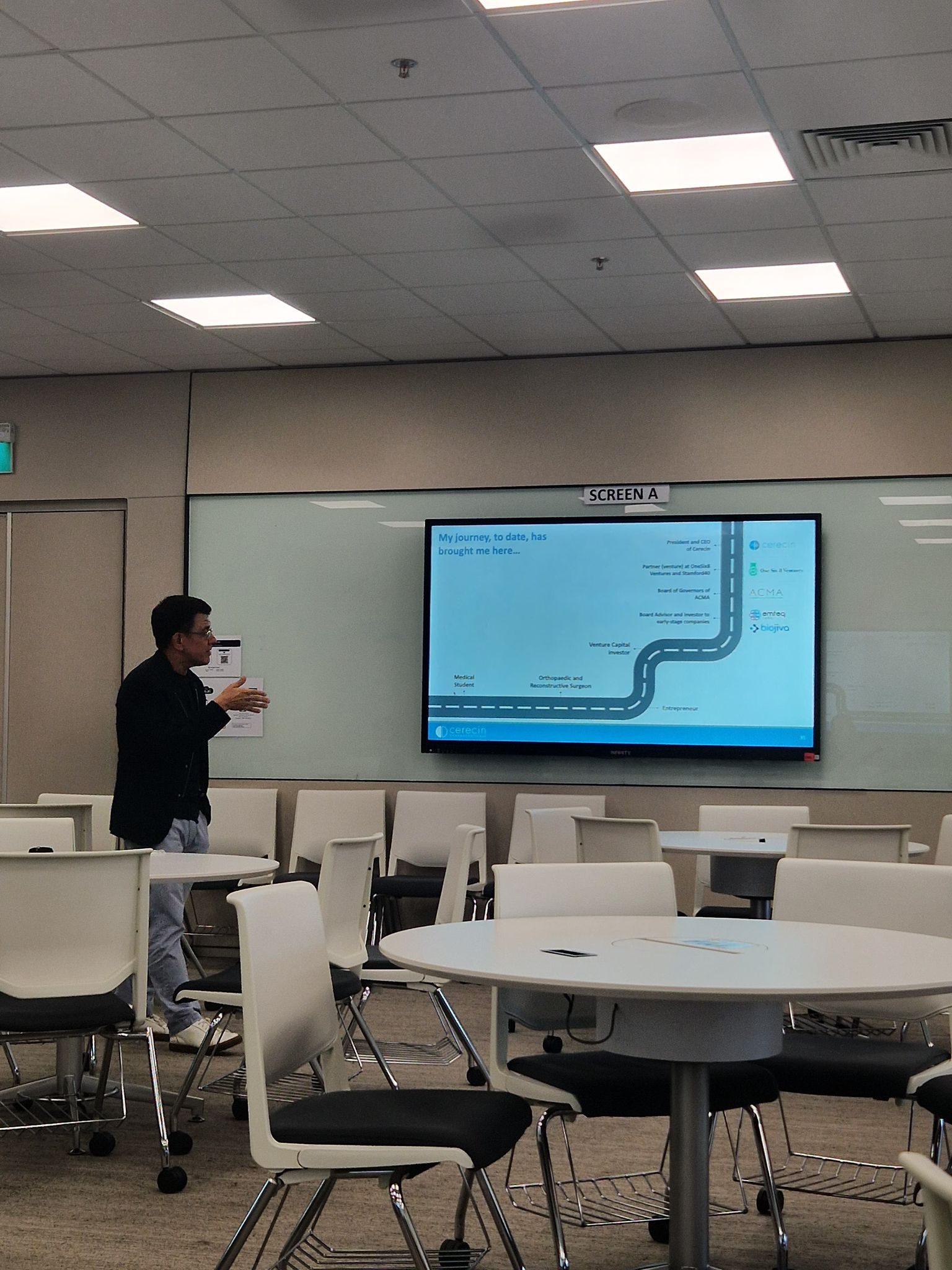
To wrap up the day, we had our final dinner at Jumbo Seafood at Riverside Point. It was the perfect way to end our study trip in Singapore. The restaurant overlooks the Singapore River, and even though we sat inside, we could still enjoy glimpses of the waterfront through the large windows. Outside, the riverfront was lively with boats passing by and buildings glowing with colorful lights.
The tables were filled with huge portions of chili crab, fried fish, prawns, and other local dishes we hadn’t tried yet. What made it so memorable were the live seafood tanks near the entrance, especially after learning earlier that Atlas actually supplies some of their fish to the restaurant. The food was excellent, with the crabs being a clear highlight, and we definitely didn’t leave hungry.
Thanks to the ZHAW, we were able to enjoy a generous and meaningful dinner together while looking back on everything we had experienced throughout the trip.
